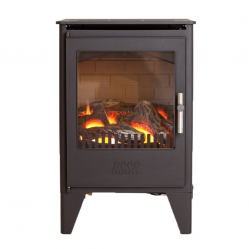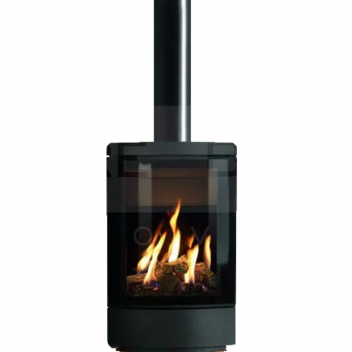Technical Details
| Product Title | Gazco Loft N.Gas Stove, Log Effect, Balanced Flue |
|---|---|
| Product Keyword | Gazco Loft Stove, Natural Gas, Log Effect, Balanced Flue, Contemporary Heater |
| Energy Efficiency | A |
| Output (Nominal) | 2kW |
| Output (Maximum) | 4.8kW |
| Fuel | Gas - NG |
| Height | 770mm |
| Width | 481mm |
| Depth | 379mm |
| Nominal Output (Range) | 1kW - 3kw |
| Width (Range) | 400mm - 500mm |
| Nett Efficiency (%) | 94% |
| Style | Contemporary |
| Chimney Type | Balanced Flue |
| Height (Range) | 700mm - 800mm |
Product Description
Gazco Loft N.Gas Stove with Log Effect and Balanced Flue
- Natural Gas operating stove for efficient heating
- Realistic log effect to create an inviting atmosphere
- Balanced flue for optimal smoke control and improved safety
- High-quality steel construction for durability and longevity
- Contemporary design that complements modern interiors
- Easy to operate with fully remote control functionality
- Efficient energy utilization with a high heat output
- Convection system for effective heat distribution throughout the room
- Eco-friendly operation with reduced emissions
- Installation flexibility with no need for an existing chimney
Reviews
Gas Stoves > Balanced Flue Gas Stoves

Balanced Flue Gas Fires
A balanced flue system is a great option for homes which do not have a chimney breast, and there is no option to locate a flue system up through the ceiling or roof. This flue system works by a 2-way pipe which draws air in through the external pipe casing for combustion and expels gases out into the atmosphere through the internal pipe. A balanced flue system is also referred to as a ‘closed combustion’ or ‘room sealed’ system due to the exchange of combustion gasses occurring within the appliance and flue system. A balanced flue system can be installed vertically up and out, or horizontal and straight out through the wall, depending on the position and requirements of the appliance.





